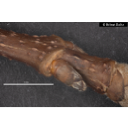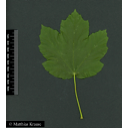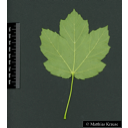Useful information about the taxon (species, subspecies, variety...)
Acer opalus Mill. 1768
Sapindaceae
(APG IV)Italian maple
Akzessionnummer: LG-X-023-20386
Pflanzjahr: 1999
Patenschaftstext: Für Sarah von Oma + Opa 4.7.2003
Taxon concept: The Plant List (2014), version 1.1
Distribution: Europe: Apennine Peninsula, Iberian Peninsula, France, Central Europe
Flowering period: IV - V
Acer opalus Mill. subsp. opalus - Accepted: Acer opalus Mill. subsp. opalus bei Zander 2008; Familie: Aceraceae (Zander 2008)Acer opalus Mill. subsp. opalus - no status: Acer opalus Mill. bei The Plant List (2010); Familie: Sapindaceae (APG III)Acer opalus Mill. - Accepted: Acer opalus Mill. bei The Plant List (2010); Familie: Sapindaceae (APG III)Acer opalus Mill. - Accepted: Acer opalus Mill. bei The Plant List (2014), version 1.1; Familie: Sapindaceae (APG III)Acer opalus Mill. - Accepted: Acer opalus Mill. bei The Plant List (2010); Familie: Sapindaceae (APG IV)Acer opalus Mill. - Accepted: Acer opalus Mill. bei Schmeil-Fitschen 2019; Familie: Sapindaceae (APG IV)Acer opalus Mill. - Accepted: Acer opalus Mill. bei BfN Checklist Flora DE; Familie: Sapindaceae (APG IV)
- Color of flower
- yellowish
- Flower ecology
- insektenbestäubt (entomophilous)
- Life form
- shrub or tree
- Leaves
- with 3-5 lobes, margin bluntly crenate
- Foliage persistence
- deciduous
- Fruit ecology
- wind-dispersed (anemochorous)
- Natural occurrence (habitat)
- mixed broad-leaved forests, thermophilic oak forests, in hedgerows
- Vegetation typ and synecology (plant community)
- in the Carpino-Fagetea and Quercetea pubescenti-petraeae
- Status of alien naturalisation
- indigenous
- Usage
- ornamental plant
Bundesamt für Naturschutz (BfN) (1999-2001 and ongoing): Floraweb - Daten und Informationen zu Wildpflanzen und zur Vegetation Deutschlands. www.floraweb.de.; Enescu, C. M. et al. (2016): Salix caprea in Europe: distribution, habitat, usage and threats. European Atlas of Forest Tree Species. Publication Office of the European Union, Luxembourg.; Kew Gardens and Collaborators (2017): Plants of the World Online. see: plantsoftheworldonline.org.; Oberdorfer, E. (2001): Pflanzensoziologische Exkursionsflora. Für Deutschland und angrenzende Gebiete. Eugen Ulmer Verlag, Stuttgart, 8., stark überarb. u. erg. Aufl, 1056 S. 978-3-8001-3131-0.; Plants for a Future (1996-2012): PFAF. See: https://pfaf.org/;
Diese Webseite verwendet Google Maps, um Karten und Standorte von Pflanzen in den Hohenheimer Gärten anzuzeigen. Dadurch werden unter Umständen Daten an Google weitergeleitet, was mit einer Verarbeitung Ihrer personenbezogenen Daten verbunden sein kann. Die Datenschutzerklärung von Google finden Sie hier: Datenschutzerklärung von Google




